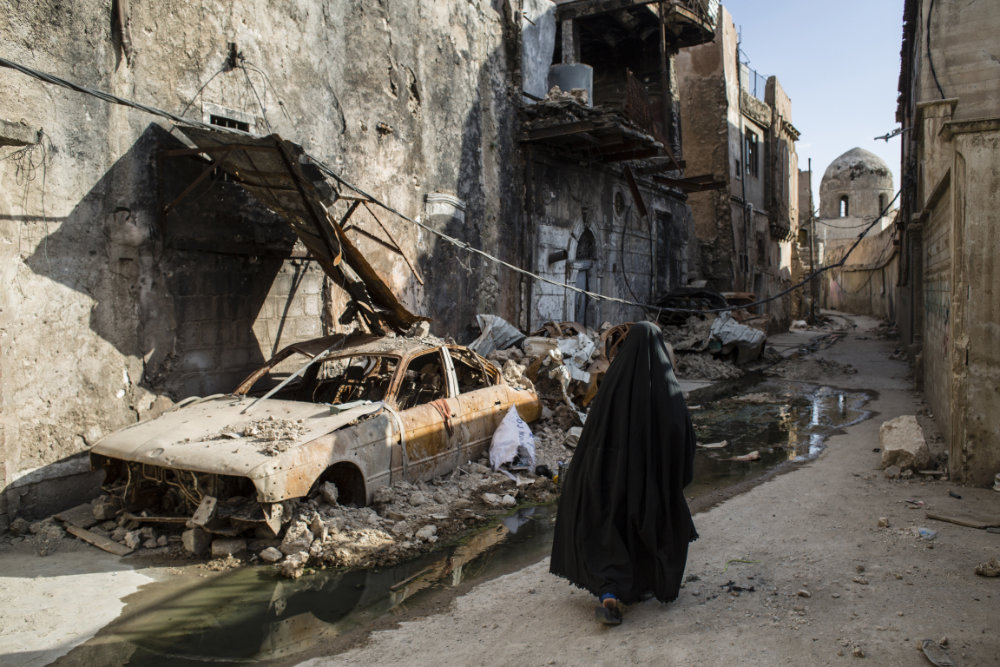‘Please, please, don’t tell anyone I have COVID-19!’
This was me, just a few weeks ago, begging my closest friends on the phone after my results came back from the lab. Although acutely aware that 50 million other people in the world had received the same diagnosis, I felt ashamed and even slightly afraid of social rejection.
Thanks to the support of family members, friends and colleagues, I managed to quickly process and overcome those emotions. I have even decided to share my experience publicly because – after months researching the issue of stigmatization against COVID-19 patients and health workers – experiencing the virus first-hand offered me a completely new perspective.
For example, I have wondered what my behavior would have been, had I contracted the virus in an environment hostile towards people affected by COVID-19. Would I have been so diligent in getting tested when the first symptoms appeared? Would I have alerted the people I had been in contact with as soon as possible? Would I have welcomed the doctor’s order to stay in isolation?
In all honesty, if a diagnosis risked relentlessly and disgracefully exposing me and my family to social revulsion and stigma, I would have tried to avoid drawing attention to it by any means. I could have even acted aggressively towards the healthcare staff requiring me to get tested or to quarantine.
My privileged experience with COVID-19 made me realize how vulnerable people affected by the virus in other contexts may be, and how crucial the role played by the social environment in accompanying them during the diagnosis and recovery process. Stigmatizing people who have (or may have) COVID-19 can only have a negative impact, not only on patients, but also on the whole healthcare system and its capacity to respond to the pandemic. Those consequences are even harsher in countries affected by war and other situations of violence, since the healthcare system is already overwhelmed with responding to other emergencies, often in very difficult working conditions.
A hidden and dangerous threat
One of the most immediate and far-reaching consequences of stigmatization is that it may prevent people from seeking medical help even if they have COVID-19 symptoms, out of fear to be labelled as a ‘plague spreader’ and rejected by their own communities. In a social environment where COVID-19 patients and their families are regularly bullied, threatened or even physically assaulted, people will think twice before exposing themselves and their own family to ignominy and violence.
Often, COVID-19 is yet another pretext to marginalize groups that are already vulnerable, such as migrants or ethnic minorities, especially – but not only – in societies divided by conflict and violence. Individuals may try to avoid screening, as the certain disastrous social consequences of a COVID-19 diagnosis – which often exacerbates economic ones – are sometimes feared more than the potential health risk of the virus itself. Avoiding screening increases the number of undetected infections, which further spread the pandemic, and may even result in violence against the healthcare staff.
The consequences of stigmatization on the healthcare system not only impact COVID-19 patients and their families, but also the healthcare workers due to their close contact with people affected by the virus. Since the pandemic outbreak, healthcare workers have been physically or verbally abused, evicted from their homes, ostracized from their communities, had bleach or acid thrown at them in the public transport, and even shot at. This aggression, generally perpetrated by common citizens afraid of the virus, clearly undermines the system capacity, already stretched by the challenges of the pandemic and, in countries affected by war and violence, by the usual rates of people wounded by fighting, which have not decreased during the last months.
Stigmatization against health workers add to their stress and fatigue, which is already high during outbreaks of infectious disease, as they deal with the fear of infecting themselves or their own families. Stigmatization contributes to professional burnout, missed shifts, mass resignation of qualified personnel, and an overall decreasing quality of the healthcare system’s performance. During the current crisis – marked in most countries by a shortage of medical staff against a rising number of infections – many health workers have decided to quit due to the pressure and poor working conditions. Understaffing, which is already an endemic problem in countries affected by war and violence, contributes to a reduced healthcare system capacity to deal not only with the pandemic, but also with the other concurring health emergencies.
Despite the negative outcome, blaming people for ‘spreading the virus’ seems to be – from the point of view of those who embrace the stigmatizing behaviour – a defense mechanism vis-à-vis the threat of infection. Identifying ‘the spreaders’ and shielding ourselves from them may give us an apparent sense of control, and thus comfort, helping turn a mysterious, invisible and frightening entity like the virus into something familiar, concrete and manageable.
This phenomenon is not new: historians recall that the hunt for an enemy has always followed closely on the heels of a pathogen, as the expression of a collective desire to assign responsibility. While this process relates to some extent to collective psychology and human nature, political leaders and media also play a key role in it, as people look to them desperately in search of answers and guidance during confusing and uncertain times, such as we are experiencing today. Their messages may further foment agitation within the society, which leads to a vicious circle of stigmatization and division. However, political leaders and media are also in the position to de-escalate tensions and convey a message of solidarity and togetherness.
We are not ‘at war’ with COVID-19
To begin with, the type of language used to talk about COVID-19 makes a difference. By delivering statements such as ‘we must act like any wartime government’ or ‘we are at war with the virus’, political leaders channel the pandemic into a more familiar war narrative, which may offer some instant relief to the public and even a feeling – illusory or not – of empowerment, uniting the population against a common ‘enemy’.
Nevertheless, linguists and humanitarians alike have warned against the middle and long-term effects of the military narrative, which fuels anxiety and distorts the reality about the virus. It also polarizes and oversimplifies the discussion: the virus is the enemy, the objective is to flatten the contagion curve, the strategy is the lockdown, the citizens are soldiers and the healthcare workers are heroes. There is no room left for governments’ responsibility; issues of preparedness, contingency planning and availability of protective equipment are completely overlooked.
This military narrative is based on patriotism and obedience, rather than on solidarity and awareness. However, the latter are more sorely needed: without solidarity and awareness, the call to ‘fight against COVID-19’ may rapidly morph into a call to ‘fight against people affected by COVID-19’. Linguists have launched initiatives to reframe the pandemic language, suggesting alternatives such as comparing the pandemic to the rival team in a football match.
Experts recommend avoiding not only military lexicon, but all terminology which implies criminalization or dehumanization of people affected by the virus. For example, the expression ‘people contracting COVID-19’ should be preferred to ‘people spreading COVID-19’, as the latter places responsibility on those who have the disease, as if they are intentionally infecting others. The IFRC, WHO and UNICEF have elaborated precious guidelines suggesting the appropriate language to address COVID-19. By following these guidelines, political leaders, journalists, social media influencers, as well as any layperson can contribute to changing the dominant war-oriented COVID-19 narrative from one that is driving collective fear and anxiety to one fostering solidarity and emotional closeness.
The COVID-19 ‘infodemic’
War language fosters aggressiveness and encourages ‘enemy hunt’ among the population, at a time when the latter is already scared and disoriented by an overwhelming amount of information on the ongoing pandemic, a phenomenon known as an ‘infodemic’. While access to quality health information should certainly be encouraged, an ‘infodemic’ includes conflicting, confusing and unreliable information, including misinformation and disinformation. The latter are largely spread through social media, a breeding ground for emotions and sensations rather than science and logic: scientists, academics and experts ‘excel at creating official reports and peer-reviewed science, not compelling Instagram memes’.
Confusing and unclear information, rumours and conspiracy theories increase anxiety, which is a driver of fear and stigma. They may also fuel panic and resentment vis-à-vis authorities and health workers, contributing to their stigmatization. Among the many examples, we can recall the ‘COVID-19 cartel’ conspiracy theory, currently quite popular in the Americas, which maintains that the virus does not exist and that healthcare staff are financially benefiting from a global lie. Incidents have been reported of healthcare workers harassed, threatened and physically assaulted by patients’ families believing in this narrative.
The consequences of these incidents are particularly disastrous in areas affected by conflict and violence, as those healthcare systems – already ravaged by war – cannot afford to further lose their capacity to respond to the pandemic, as well as to weapon wounds or other healthcare needs. When doctors, nurses and other healthcare workers decide to quit because they cannot cope anymore with the levels of violence, or when entire healthcare facilities are closed because they can no longer operate safely, people find themselves at the mercy not only of the pandemic, but also of war, violence and any other healthcare emergencies.
To contrast the unfortunate outcome of a COVID-19 ‘infodemic’, political leaders need to provide clear directives and accessible information to the population, avoiding as much as possible quick and unfounded changes that may generate mistrust and anguish and pave the way to the circulation of ‘alternative truths’. As we have learned from previous pandemics, authorities must be transparent and credible at all times, clear about what is known and what is not known, and report regularly on the ongoing efforts to achieve a better understanding of the pandemic.
In countries already facing conflict and violence, this type of leadership and information-sharing is a matter of life and death.
See also
- Alexander Breitegger, COVID-19 vaccines and IHL: ensuring equal access in conflict-affected countries, November 5, 2020
- Jess Markt, COVID-19 and its impact on persons with disabilities, September 17, 2020
- Sophie Sutrich, COVID-19, conflict and sexual violence: reversing the burden of proof, June 19, 2020
- Cordula Droege, COVID-19 response in conflict zones hinges on respect for international humanitarian law, April 16, 2020






Comments